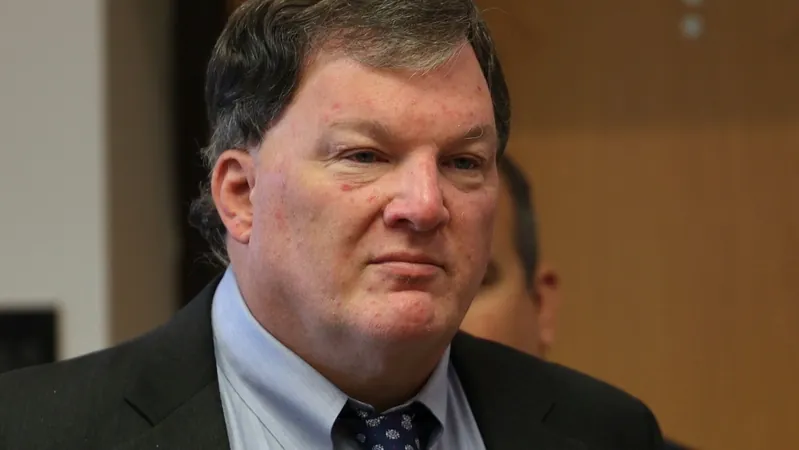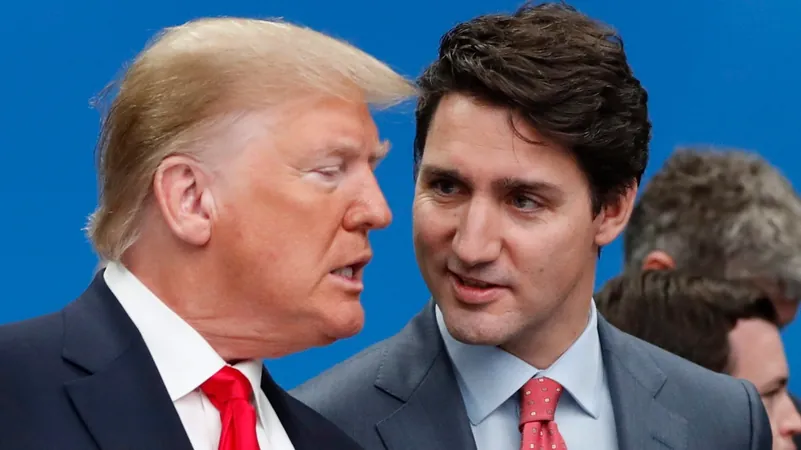
Uniting Worlds: The "Connections" Art Show at RAM Merges Healing Neuroscience with Artistic Expression
2024-12-17
Author: Benjamin
In the midst of the chaotic holiday season, where the bustling traffic and frenzied shopping can overwhelm even the most patient souls, the "Connections" art exhibit at the Royal Alberta Museum (RAM) provides a serene sanctuary. This innovative show invites visitors to explore the complexities of the human condition through a fusion of neuroscience and art, creating a thought-provoking atmosphere amid the holiday turmoil.
Years in the making, this collaboration between the University of Alberta’s Neuroscience and Mental Health Institute and its Faculty of Arts has materialized into a compelling exhibition named "Connections: Bringing Neuroscience and Art Together." According to co-curators Simonetta Sipione and Marilène Oliver, the show is a "collection of artwork and scientific images" designed to portray various aspects of neuroscience, brain diseases, and mental health, while weaving in the profound intersections with art and life.
The exhibit features a diverse array of participants, including neuroscientists, caregivers, and accomplished local artists such as Richard Boulet, Liz Ingram, and Bernd Hildebrandt. A striking aspect of this collection is its relatable essence; many of the artists have personal experiences with mental health issues, lending further depth and authenticity to their works.
The title "Connections" was chosen to reflect the intricate ties between neurological conditions and the significance of community support. Co-curator Oliver recounted how the project evolved from discussions about neurological disorders and their implications on our well-being. The team ultimately sought a positive narrative, moving away from "Disconnection" to emphasize hope and unity.
The exhibition is divided into three captivating sections: "The Beautiful Brain," "Broken Threads," and "Healing." Each part showcases an impressive range of works. For example, "The Beautiful Brain" features Sarah Treit’s delicate floral representation of the corpus callosum — the connection between the brain's left and right hemispheres — alongside Diego Ordonez’s intriguing "Pollock in a Petri Dish," which captures the beauty of microscopic neuronal interactions.
As attendees delve into "Broken Threads," they discover more personal expressions of struggle and resilience. A poignant piece by aAron Munson reflects his isolation during a formative period in the 1970s, while Fateema Muzaffar's self-portrait expresses her battle against negative thoughts through the metaphor of a tree assaulted by woodpeckers.
The final segment, "Healing," concludes the journey with a focus on recovery and hope. Highlights include a collaborative centerpiece by Ingram and Hildebrandt, which elegantly combines MRI brain scans with poetic reflections, offering a contemplative space for viewers. Additionally, artist Paul Brain presents his series inspired by his own fight with brain hemorrhage and depression, demonstrating how art was pivotal in his healing process.
One of the most moving works in the exhibit comes from co-curator Oliver herself. Displaying a sculpture that captures a 3D-printed scan of her mother’s brain in the hands of an anonymous figure, Oliver shares the deeply personal narrative of caring for her mother, who was diagnosed with early-onset Lewy Body Dementia. In her poignant reflections, she emphasizes the emotional isolation that often accompanies caregiving and the societal stigma surrounding dementia.
The project's success has established a new community among artists and health professionals. Oliver notes the delightful exchanges among participants at the exhibition's opening, highlighting the profound connections forged through their shared experiences.
As part of its ongoing mission, the exhibit encourages further engagement between art and science, inviting individuals to contribute their own works and share in the dialogue. Oliver passionately conveys her hope that this project will continue to grow, fostering more connections within the community.
**Connections: Bringing Neuroscience and Art Together** is currently on display at the Royal Alberta Museum until June 22. Admission is included with RAM tickets, priced at $21 for adults, $14 for seniors, $10 for youth, and $50 for families. Don’t miss your chance to engage with this unique celebration of healing through art!









 Brasil (PT)
Brasil (PT)
 Canada (EN)
Canada (EN)
 Chile (ES)
Chile (ES)
 España (ES)
España (ES)
 France (FR)
France (FR)
 Hong Kong (EN)
Hong Kong (EN)
 Italia (IT)
Italia (IT)
 日本 (JA)
日本 (JA)
 Magyarország (HU)
Magyarország (HU)
 Norge (NO)
Norge (NO)
 Polska (PL)
Polska (PL)
 Schweiz (DE)
Schweiz (DE)
 Singapore (EN)
Singapore (EN)
 Sverige (SV)
Sverige (SV)
 Suomi (FI)
Suomi (FI)
 Türkiye (TR)
Türkiye (TR)